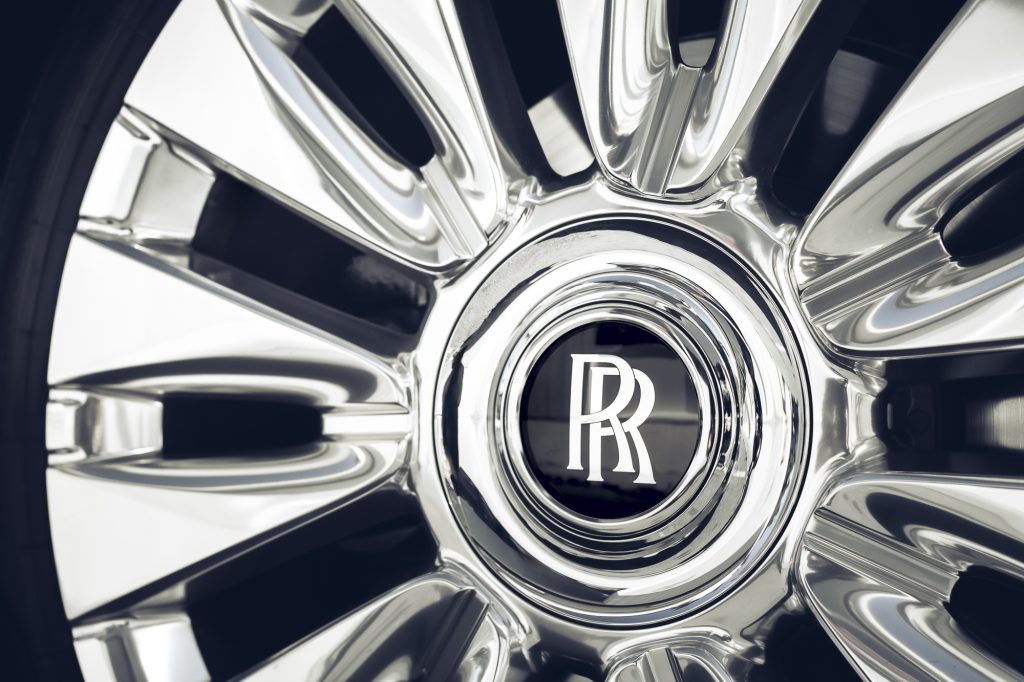Silver Needle is among the most expensive, most prized tea varietals in the world. Traditionally grown in the mountains of China’s Fujian Province, Silver Needle is made exclusively from the fuzzy, shoot-shaped top buds of the tea plant, plucked before they open. Harvesting of the most prized buds takes place during the March-April “first flush,” and ideally in the early morning when the sun has dried any overnight dew. Plucked shoots are then laid out in baskets to further dry under the sun, lightly oxidizing before they are baked at low temperature. Silver Needle tea is savored worldwide for its delicacy, light sweetness, and exquisitely refined flavor lacking any astringency. It is, in many ways, the Rolls-Royce of fine teas. The Spectre is that British automaker’s latest brew.
Rolls-Royce has always been about outright elegance and extreme refinement. I’ve ridden in a handful of old ones, including a ‘50s Silver Cloud, and driven newer examples – the Wraith, Ghost, and Cullinan. Each felt wonderful in its own way. The 2024 Spectre, Rolls-Royce’s first all-electric car, is remarkable not because of any particular advancement, but rather for how effectively it harnesses EV technology to deliver the brand’s trademark characteristic: effortlessness.

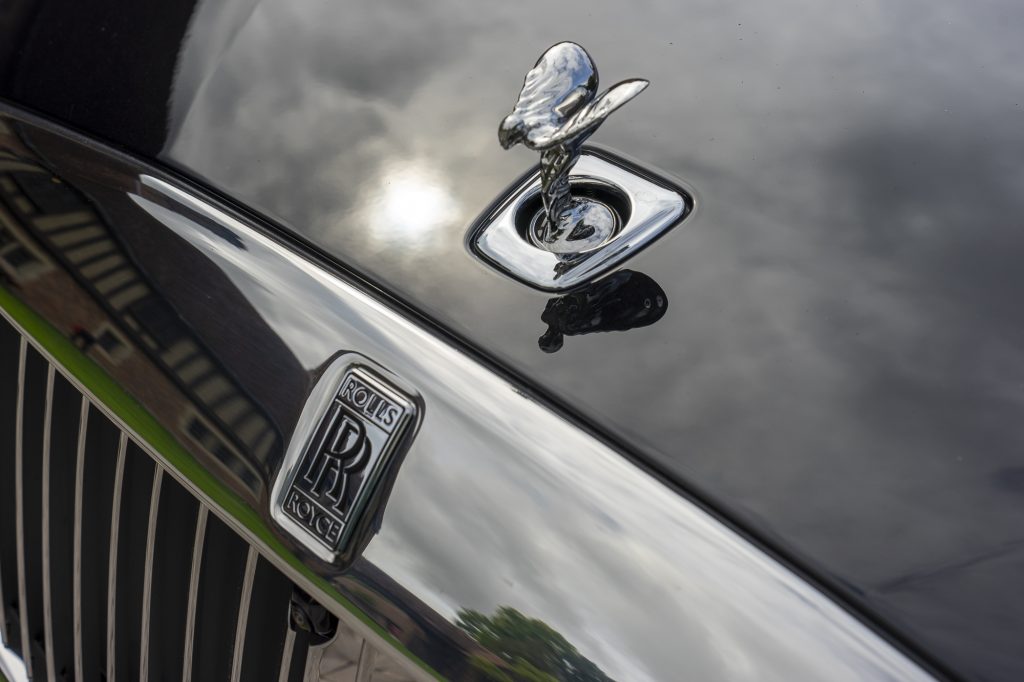
An electric drivetrain has scarcely ever been more suited to its intended use. Everything that makes EVs impractical as daily drivers (cost, available charging infrastructure, charging speeds) and uninspiring for sports cars (vapid-feeling motors, lack of sound, weight) is unimportant for an ultra-luxury machine like this. A range of 266 miles (for models with 23-inch wheels, or 291 miles with 22-inch wheels) should be plenty when the average Spectre owner has seven cars, any number of which may have gas engines for longer trips. Still, it’s not much for a car costing this much money, and it should be noted that newcomer Lucid’s base Air claims more than 400 miles of range. Contrary to reputation, Rolls owners here in the United States tend to drive their cars themselves and don’t have a chauffeur. Which is to say, they drive because they want to, not because they need to. When a car trip isn’t to their preference, yachts or private jets suffice.
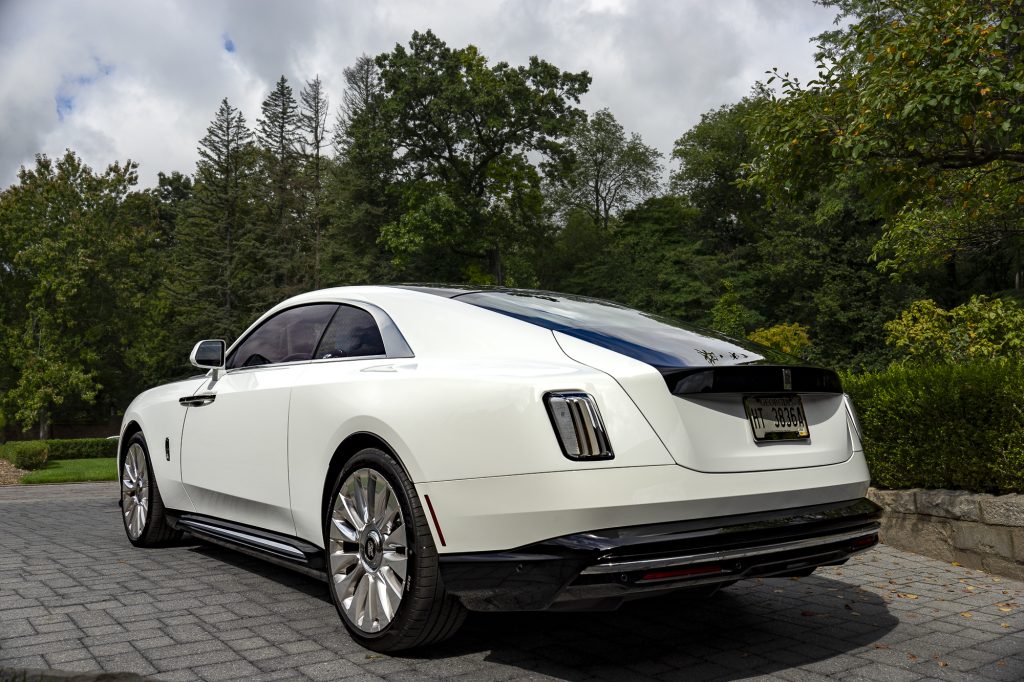
Barge-like mass is practically a requirement for a Rolls-Royce, and exquisite quietude has long been a hallmark of these cars, whether they packed V8s or V12s. Spectre engineers targeted a 0-60mph sprint of 4.4 seconds – optimal, in their view, to deliver immediate passing power that nevertheless remains smooth and doesn’t throw passengers around. The sheer concept of Tesla’s Ludicrous Mode, to the comfort-obsessed boffins in Goodwood, must seem, well, ludicrous.
Specs: 2024 Rolls-Royce Spectre
- Price: £400,000+ (est.); £330,000 (base)
- Powertrain: 102-kWh lithium-ion battery, 2 separately excited synchronous motors (190 kW front; 360 kW rear)
- Output: 577bhp; 663 lbft
- Layout: Twin-motor, four-passenger, all-wheel-drive coupe
- EPA Range: 266 miles (23-inch wheels); 291 miles (22-inch wheels)
- 0-60 mph: 4.4 seconds
- Competition: Strictly speaking, nothing lines up apples-to-apples.
New for 2024, the Spectre rides on the same Architecture of Luxury platform as the Cullinan SUV and Ghost saloon. According to a company press release, the all-aluminium spaceframe was engineered and designed from the outset to accommodate pure electric power “as and when the technology became available.” The Spectre uses a 400V electrical system and includes two separately excited synchronous electric motors, one on each axle, capable of producing 577bhp and 663lbft of total output. The battery is a 102-kWh lithium-ion unit, shared with the BMW i7, and alone accounts for 700kg of the Spectre’s 2.9 tonnes. Rolls-Royce boasts that by integrating the battery into the body structure, the spaceframe is 30 per cent stiffer than any prior model from the brand. Another bonus: the battery’s low position serves as a large brick of insulation from road and wind noise.
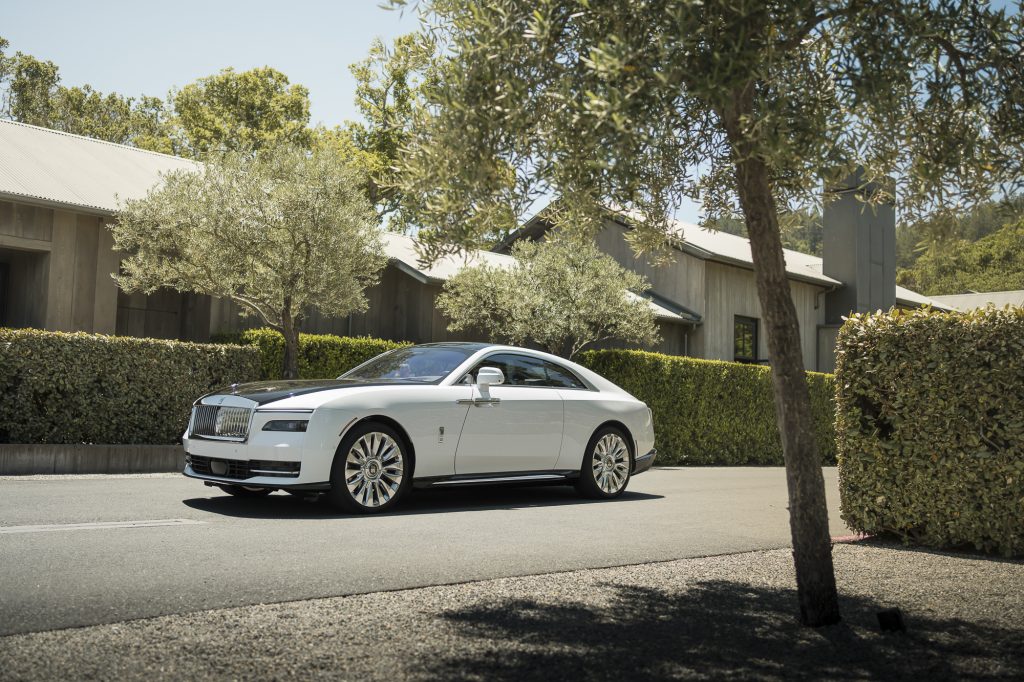
The base price for a 2024 Spectre is £330,000, before options. Most owners will spec their cars beyond £400,000. Our Arctic White test car wore no official window sticker price, but the spec sheet glittered with the following goodies: Aero Two-Tone paint, polished 23-inch wheels, a Navy and Charles Blue interior scheme, open-pore Mimosa Negra wood interior trim, contrast stitching in white, stowable blue umbrellas, a “bespoke” clock, illuminated treadplates, ventilated massage seats, and a “Starlight” headliner that extends onto the doors with 4,796 individual points of lights.
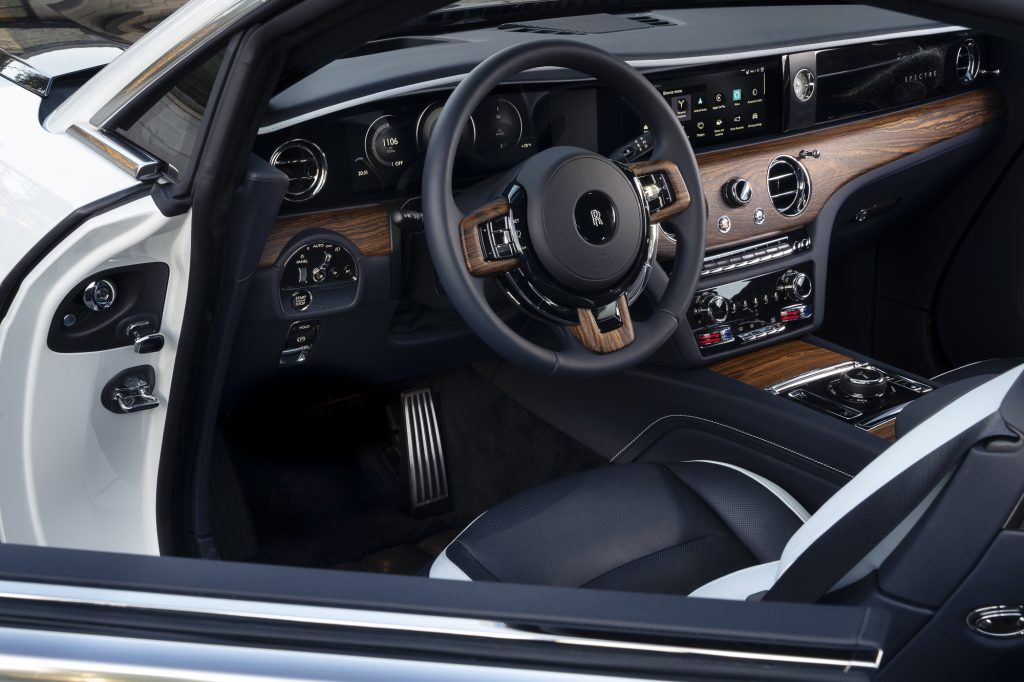
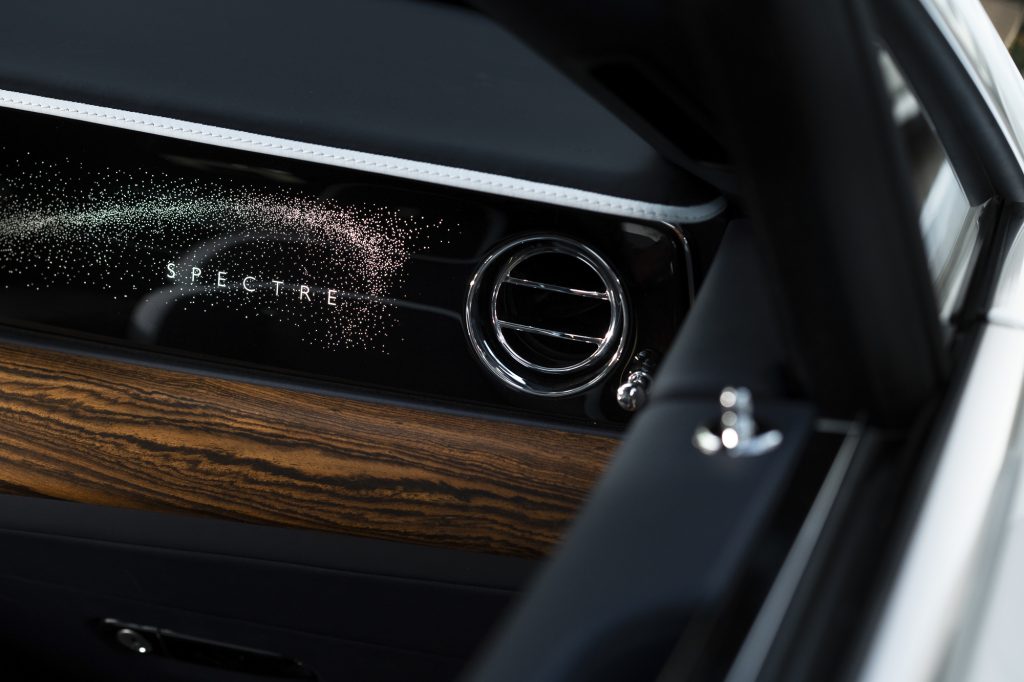
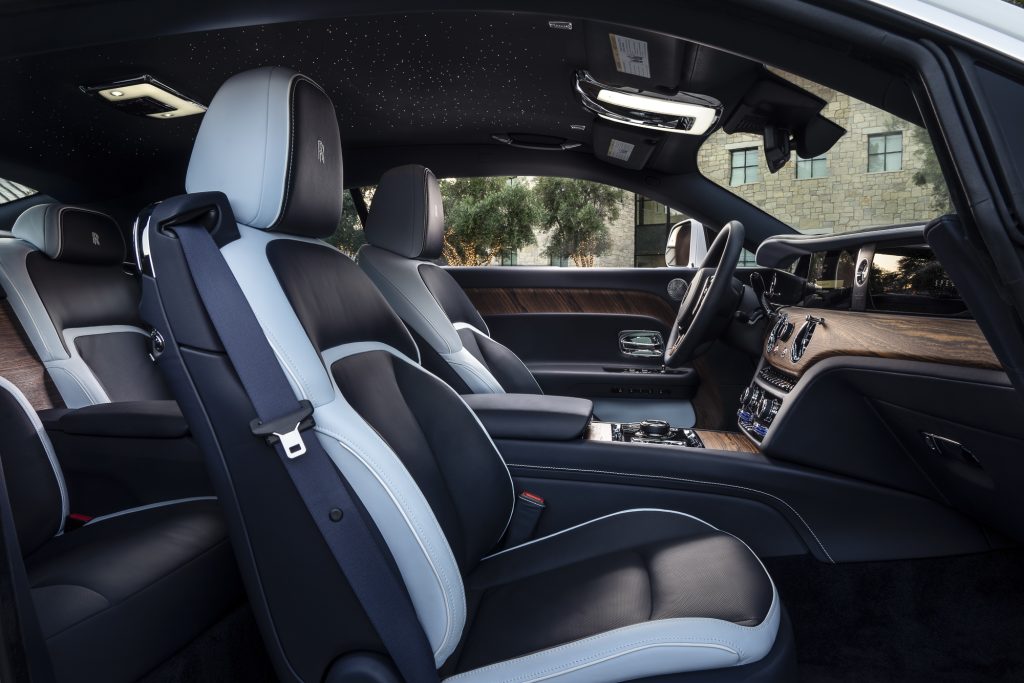
The interior is eerily quiet, such that the HVAC system produces substantially more noise than the powertrain. Every single object and texture within reach is utterly beautiful to touch or look at. Knobs find their little detents with satisfying precision. The steering wheel is gorgeous, simple, and has a pleasant but controllable heft at any speed. The exposed wood is finished in such a way that you can appreciate the grain of the wood while also sensing that it is almost perfectly even and smooth in its curvature. Despite this downright overwhelming exuberance, the interior’s fundamental layout is crisp and simple – a far cry from the tech-laden, pixelated song-and-dance in BMW, Audi, and Mercedes flagships. This is intentional, as if the car wants you to say “hmm,” and “oh,” rather than an immediate “wow.” The lambswool carpet on the floor of the back row feels orders of magnitude softer than any piece of clothing I’ve ever owned. The new instrument cluster is all-digital, but the display mimics traditional gauges and is blessedly free of corny gimmicks.
The Spectre seats four, but only nominally in the way that the Porsche 911 does. What tech baron is going to shame their friends, colleagues, or even children by asking they duck in the back row, plush and extraordinary as it is? That sloping roofline does not allow for generous rear-seat headroom. More so than the Cullinan or Ghost, the Spectre is for the driver rather than the passenger. Even without a companion on board, you can feel like an entire orchestra is there with you thanks the the 18-speaker, 1,400-watt Bespoke Audio system. It offers a stunning tapestry of sound that is all the more impressive and enjoyable with no competing sound from the rest of the car to distract your ears.
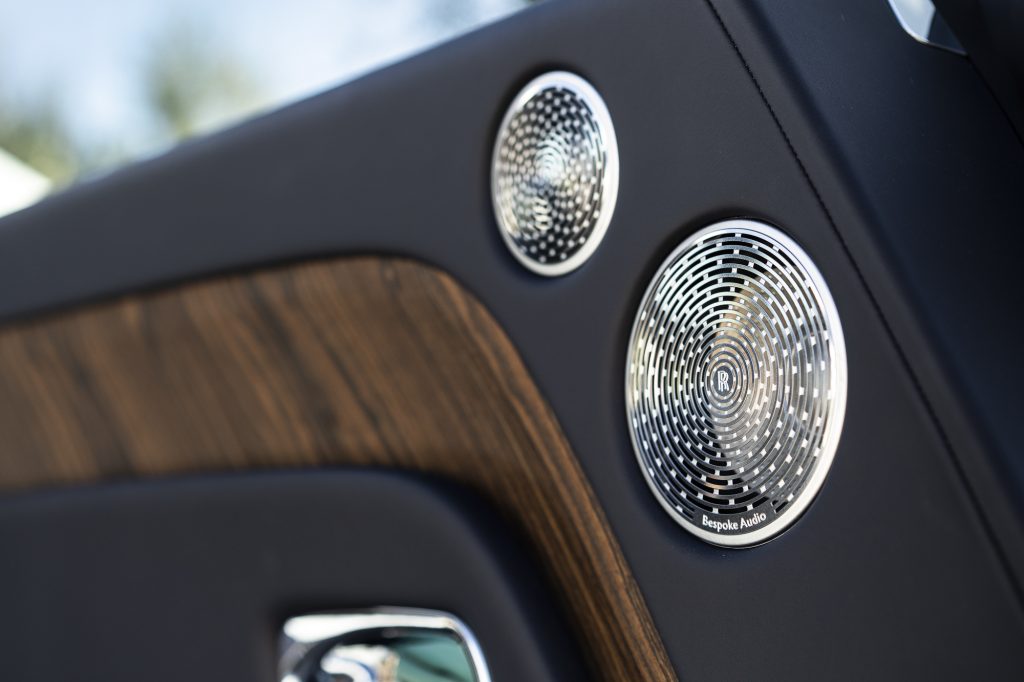
Out on the roads in metro Detroit’s more posh suburbs, the Spectre glides over potholes and rough pavement like they’re not even there. The floatiness is at first bizarre and even disconcerting, especially when approaching a corner, but you quickly learn to trust the car’s electronic body control. Using a variety of sensors and GPS data, the Spectre can automatically disconnect its anti-roll bars on straight roads to let each wheel react to road conditions without disrupting the wheel on the other end of the axle. Over highways with repeated, visible expansion joints, it works so well you’d think the road was runway-smooth. (Not having to think about it at all is more the point.) When a corner approaches, the system reconnects and stiffens suspension dampers in anticipation.
It is not an exaggeration to say I could have one-handed the steering wheel and comfortably sipped a cup of hot tea. Probably wouldn’t have spilled a drop, either.
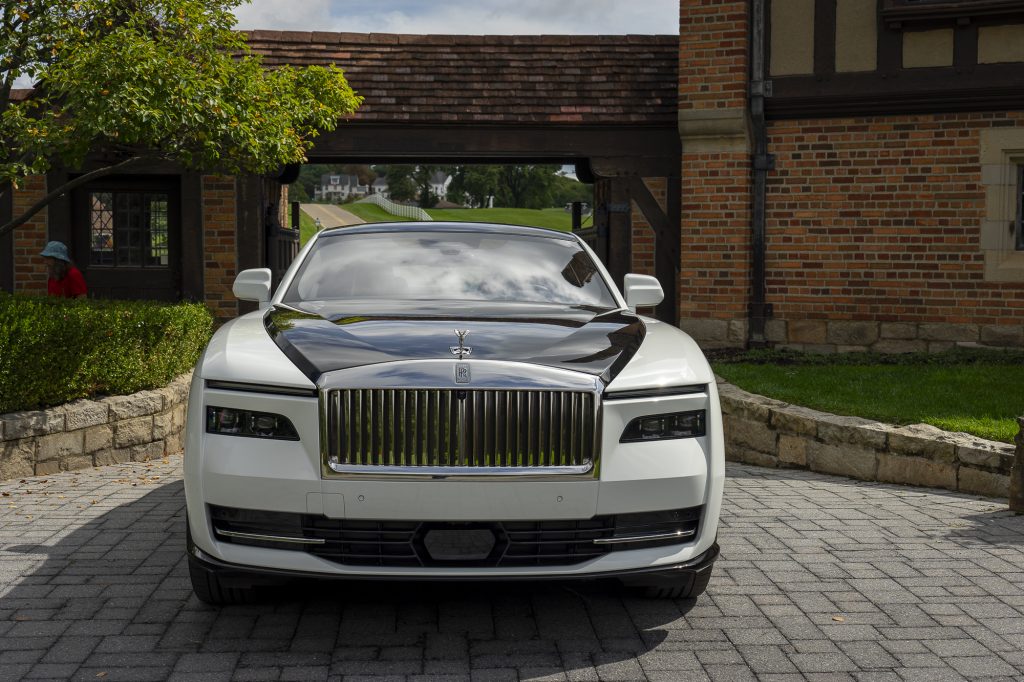
Part of what makes all this possible is a new software architecture known as Decentralized Intelligence; the setup features dedicated data processors positioned close to their sensor source, rather than through a single central processing unit, to “respond more quickly to driver inputs and changing road conditions.”
A four-wheel steering system aids handling; engineers chose to use a 12-volt motor for this application, rather than a 48-volt unit, because the latter’s torque would have required a stiffer attachment where the half-shaft meets the wheel, resulting in harsher feedback for the driver. The system is most noticeable at low speeds and in parking lots. At 215.55 inches long, the Spectre is less than an inch shorter than the outgoing Wraith, so every bit of help turning it on its axis is necessary. It’s no tougher to park than a mid-size sedan, which feels odd when you remember this behemoth is six inches longer than a regular-cab Ford F-150 pickup truck.
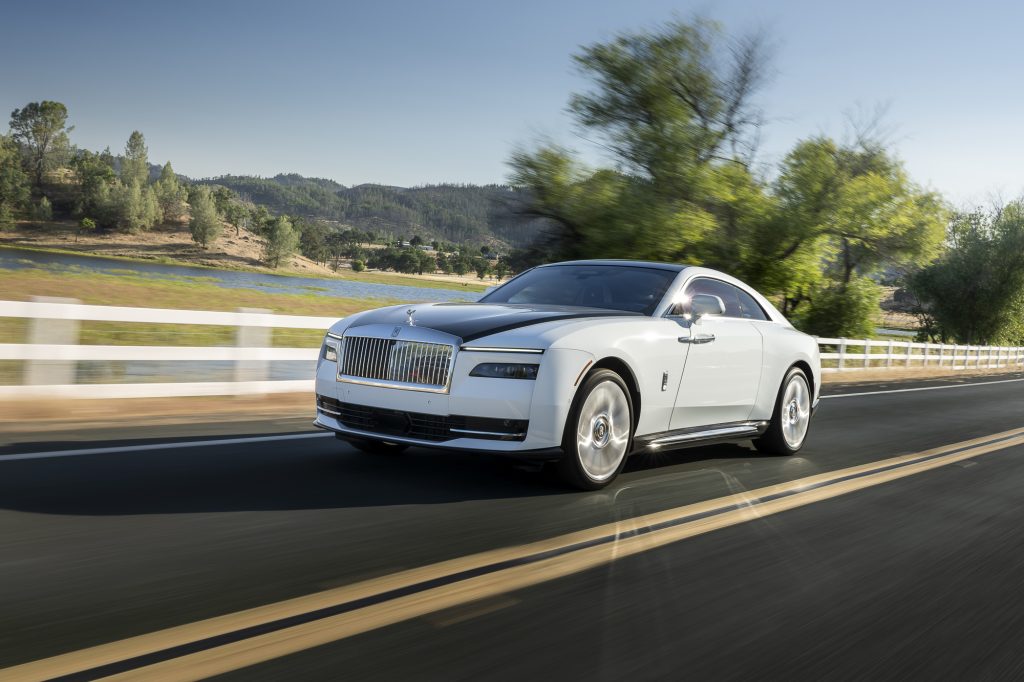
Out of curiosity, I floored the accelerator from a dead stop on an empty, picket-fence-lined road. There was no scramble of clawing wheels, no cheesy Tron-like whir noises pumping through the speakers, no dramatic thrust back into the leather throne as the car reared on its ample haunches. The Spectre simply… went. Not unpleasantly, mind you, but rather in the very English sense of simply getting on with it. For me, the real achievement of this car is that driving it doesn’t feel like an artificial cloud devoid of feedback. The body moves when you swing it into a hard corner, but just so. Braking hard from a high speed does elicit a sense of sheer mass, communicated through the pressure in the brake pedal, that’s quite distinct from what you feel slowly rolling to a stop. It’s one of the only moments you remember what a large vehicle you’re driving. One-pedal driving in max-regen “B mode” is also possible, but at times the brake pedal felt strange and unnatural when used in this mode.
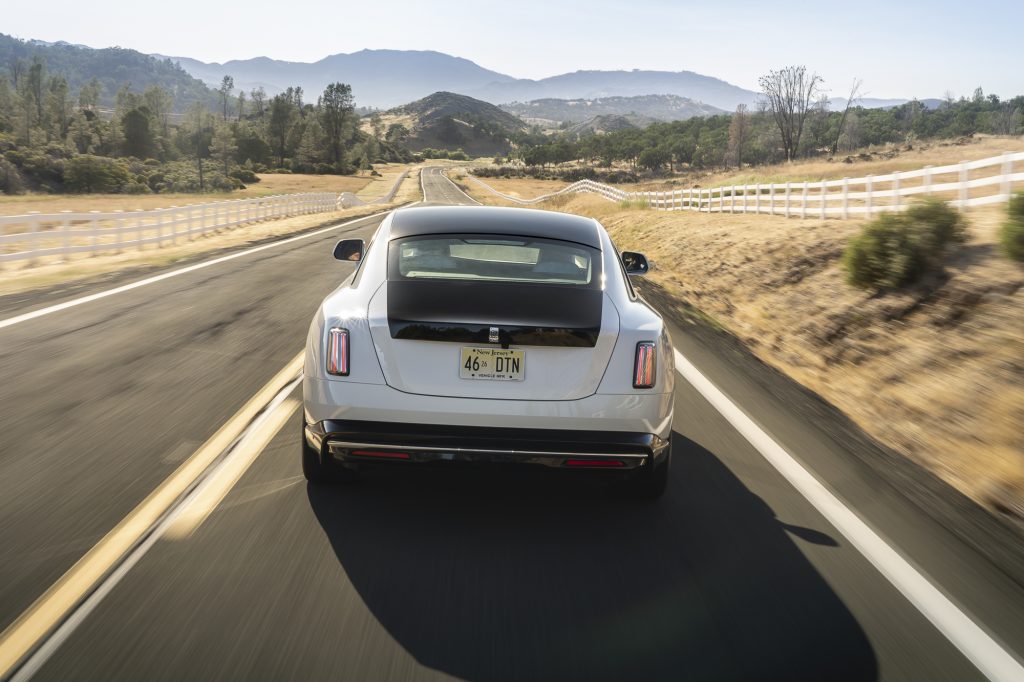
We didn’t have the opportunity to use any charging services, but Rolls-Royce claims that the Spectre’s battery takes 34 minutes on a 195-kW DC fast charger (Level 3) to go from a 10 to 80 per cent charge. Just don’t expect to see a Spectre parked at a city charging station or the dinky setup at to your local Kum & Go – Rolls owners drive their cars, on average, just 3,200 miles a year and one can expect that almost all EV charging will happen at owners’ homes, luxury hotels, or similar tucked-away locations.
Rolls-Royce has said it plans to have a fully electric lineup by 2030. The brand’s embrace of EV technology is strategic not just because of the perceived benefits to its products, but also as a means of aligning with its customer base’s preferences. According to PR spokesperson Gerry Spahn, Rolls has been working hard to lower the average age of its clientele over the past decade or so. The average owner is now 43, which is “considerably less stodgy” than when the modern Phantom launched in 2003. “That first Phantom was very formal, targeted at older drivers,” said Spahn. “By 2009-2010, the Ghost was bringing in younger, newer wealth in the 40-to-50 age range. Then, the Dawn and Wraith, around 2015, brought in a whole wave of young entrepreneurs who struck it big.”
Forty per cent of Spectre buyers will be taking delivery of their first Rolls-Royce, and, Spahn said, many of these customers “want the car for its social benefits.” Translation: the ability for an owner to say that they drive an EV, rather than an emissions-spewing gas car. Notwithstanding the ongoing debate around the true environmental impact of electric cars and batteries, let alone the contradiction of an average owner of six cars and a £400,000-plus Rolls-Royce trying to make any statement about sustainability, it’s obvious that cachet and status are important considerations in this ultra-elite social stratum.
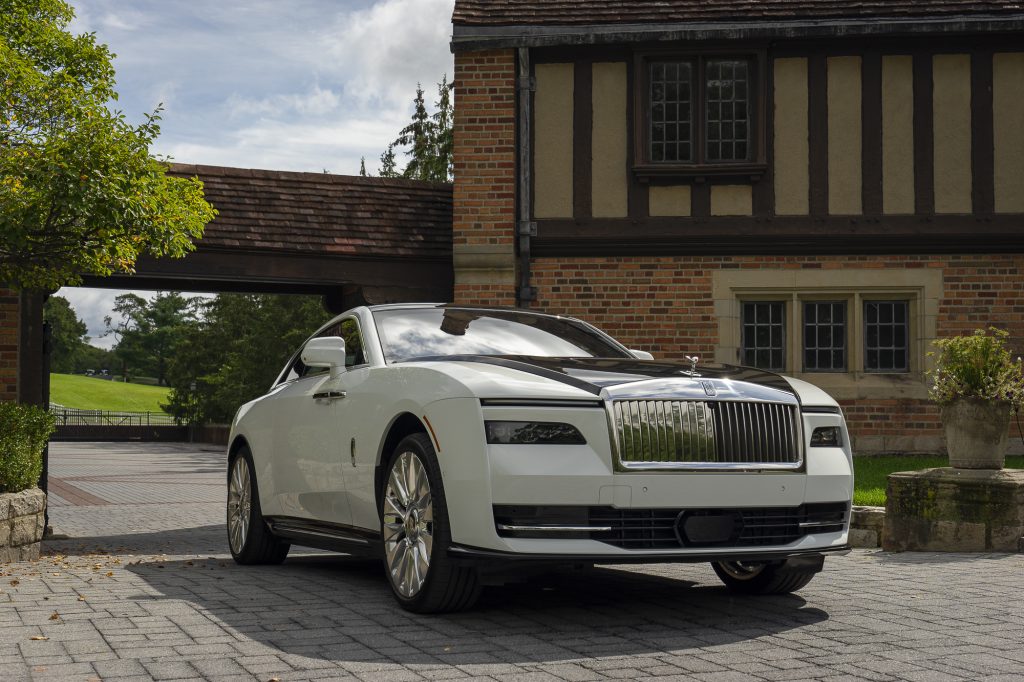
The Spectre is, in many ways, the slab-sided silent hovership of the ultra-elite’s dreams. It can be completely personalized to the customer’s taste, such that it represents not only their preferences but functions “as a monument to their achievements,” in Spahn’s words. Rolls-Royce points out that, in 1900, company co-founder Charles Stewart Rolls saw potential in the electric car: “The electric car is perfectly noiseless and clean. There is no smell or vibration. They should become very useful when fixed charging stations can be arranged.”
Charging stations are being arranged nationwide, albeit piecemeal and with inconsistent reliability for the masses. A Rolls-Royce, however, makes a highly convincing use case as the ideal application of EV technology – among the most economically privileged class, anyway. These fortunate few can lay back in their gorgeous leather seats, stare at the simulated stars in the headliner, and fondle the painstakingly crafted materials in their cockpit that have been shaped from untold man-hours of expert processing. It is a haven from which the astringency of life is reduced to less than a whisper, quiet enough to practically hear the steam rising from a cup of Silver Needle.
2024 Rolls-Royce Spectre
Highs: As quiet as a car could reasonably be. Rides like a dream. Looks, feels, smells, sounds like a Rolls-Royce ought to.
Lows: Occasionally odd braking feedback in regen mode. Though it may not strictly be necessary (no element of such a car is), more than 300 miles of range should be doable for a car at this price point.
Takeaway: That the Rolls-Royce Spectre is a damn-near perfect EV (and a damn-near perfect ultra-luxury coupe) is a strong indicator of the class to which this technology, in its current state, is most suited.
